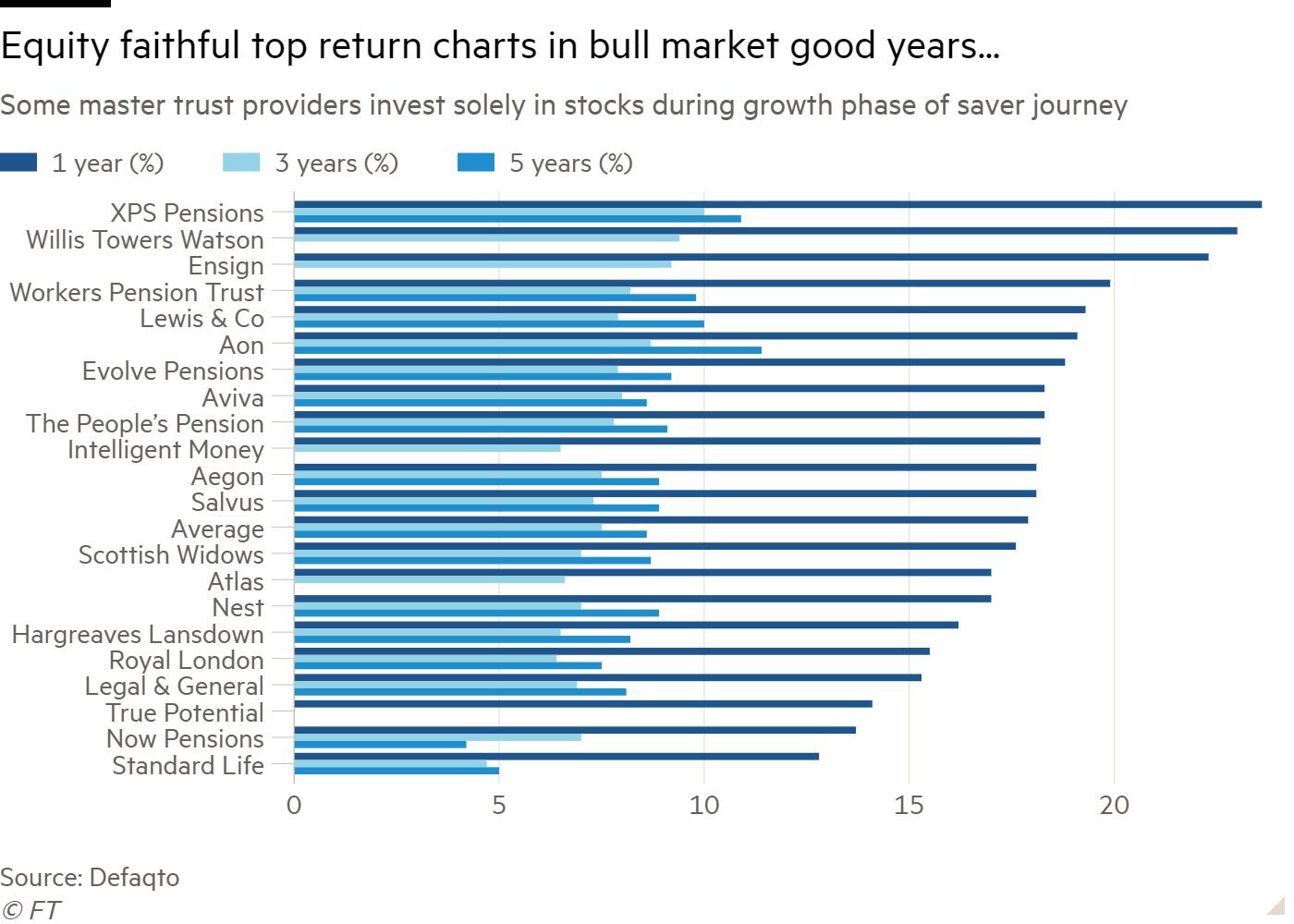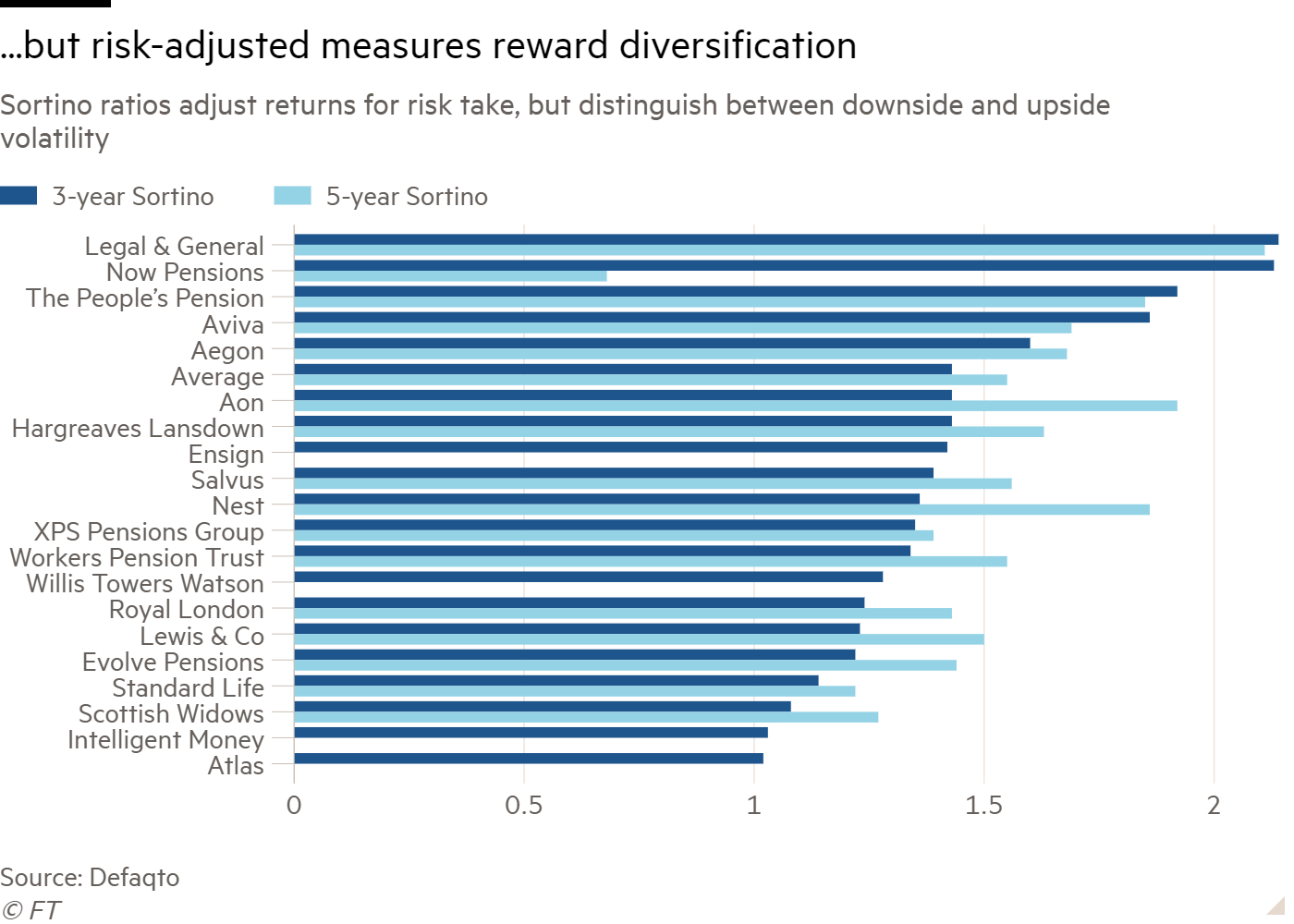Investment strategies pursued by some of the UK’s authorised master trusts are exposing pension scheme savers to unnecessary risks, according to the Pensions Regulator.
The watchdog’s head of investment consultancy, Fred Berry, expressed concerns that some providers are taking a laissez-faire approach to investment in a new report compiled by the Defined Contribution Investment Forum in late 2019 – just months before a bout of unprecedented market volatility erupted.
In March, a report by consultancy XPS Pensions highlighted that equities – the asset class that still drives the majority of DC member returns – had shed a quarter of their value. Bond markets, often relied on to move inversely to stocks and provide a buffer, had also tumbled.
Generally, a lot of the master trusts have looked at this in a lot of detail. There will be a few, though, who maybe haven’t acted quickly enough
Michael Ambery, Hymans Robertson
Stock markets have since staged a dramatic recovery on the back of massive stimulus from governments and central bankers, but with indicators pointing to a severe economic recession, there could be pain to come for the schemes singled out by Mr Berry.
“There are a fair few of them, I suspect, the smaller or mid-sized ones, which still seem to be stuck in a bit of a time warp, thinking that if you do passive equities phasing into derisking over time, ‘that will kind of do, won’t it?’,” Mr Berry told the DCIF.
Some master trusts have been busily diversifying their portfolios over recent years, often adding less liquid assets in an attempt to capture strong growth without members’ pots being subjected to whipsawing market moves.
Nest, the master trust set up by the government to serve the automatic enrolment market, added three private credit mandates in 2019, with exposure to real estate and renewable energy infrastructure.
The provider boasted last month that it had prepared for situations like the March crash, as its default limited losses to around half of those sustained in the FTSE 100.
Mr Berry continued: “We know that some of the more sophisticated master trusts out there are doing better and we are intending, during the course of supervision, to find out more about what they’re up to, through the lens of our understanding and working with industry to see what best practice is, to encourage the other trusts to improve.”
A report by financial information business Defaqto suggests that many multi-employer providers need to heed this best practice.
Out of 22 contract-based and trust-based providers, only Nest invests in equities, fixed income, property, commodities, other alternatives and cash during the main growth phase of a member’s savings journey. Three providers invest only in equities.
Consultants happy with volatility levels
However, Mr Berry’s comments and the Defaqto report have exposed something of an ideological rift in the DC investment community.
Sharpe ratios, which measure the return achieved per unit of risk, and Sortino ratios, which distinguish between upside and downside risk, generally flatter more diversified providers – including a dramatic turnaround in performance for previously criticised provider Now Pensions.
But less diversified portfolios still drove above-average outcomes on these measures, according to the report, and have driven strong compound returns on the back of the equity bull market.
For example, Willis Towers Watson’s LifeSight and XPS Pensions’ master trust defaults both invest solely in equities, but delivered returns of around 23 per cent last year, and also topped the rankings over a three-year period.
This has helped some practitioners to argue that volatility is a desirable feature of a DC default.
“When you’re in your 20s and 30s, our view is that in that phase you take as much risk as you can, investing sometimes up to 100 per cent in equities in different world markets,” said Michael Ambery, head of DC provider relations at Hymans Robertson.
He said his company evaluates providers according to four categories – outcomes, impacts, investment returns and volatility – in the growth phase, but argued that risk control is more important as a saver nears retirement. 
Young savers stung by the FTSE fall will also follow any rebound in markets to come, while the true test of providers will be how well they insulate savers with less time to make good shortfalls, Mr Ambery added.
“Two weeks into this we ran a few figures,” he said, explaining that the longer time frame for younger savers and lower risk run by older workers should limit income losses to 4 per cent and 5 per cent, respectively,” he said.
“The one where we’ve seen the most impact is for those in the mid-range of their life cycle, 45 years of age for example, who we modelled on a £35,000 salary. For them, we estimate the impact of the shock to be around 15 per cent reduction in outcome.”
Mr Ambery said the timing of glide paths will be crucial: “Generally, a lot of the master trusts have looked at this in a lot of detail. There will be a few, though, who maybe haven’t acted quickly enough.”
Steve Charlton, managing director of DC at SEI, agreed. “Those people who are closest to retirement… tend to sit in SEI’s moderate fund, which, according to figures I saw last week, are only down about 6 per cent since the beginning of the year; quite remarkable when you consider the markets,” he explained.
He said SEI’s defensive fund for those drawing income is down by 1 per cent.
Good comms at a premium
While investment strategy is important, the need for communication has perhaps never been more important, with reports earlier this week from the Institute for Fiscal Studies and AJ Bell showing a record number of people had made withdrawals from their pensions in the last quarter.
With unplanned withdrawals incurring potentially significant long-term consequences, regulators continue to advise that people seek expert advice before making decisions. Clear and consistent communication from trusts and fund managers is therefore vital.
“Members want to know that their money is safe, and that when they go on to look at their values they can see that their money is still there, and that the same care and attention is being given to it as was the case before the pandemic,” Mr Charlton said.






















